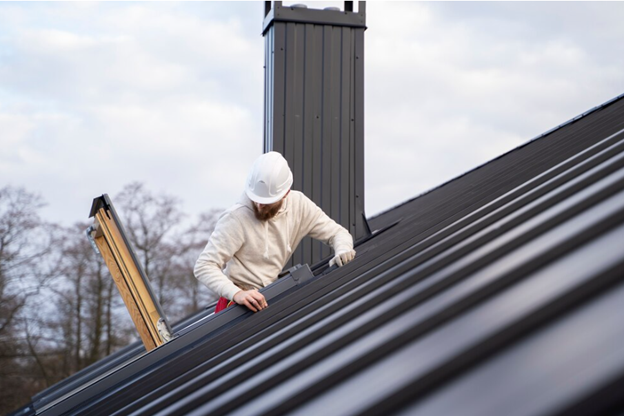Masonry chimneys are a common feature in many homes, providing a safe and efficient way to vent smoke and heat from fireplaces and heating appliances. However, like any other structure, masonry chimneys can be prone to damage and deterioration over time, which can lead to mold growth. In this article, we will explore the causes of mold growth and what to do for masonry chimney repair, so to prevent future occurrences.
Causes of Mold Growth in Masonry Chimneys
Mold growth in masonry chimneys can occur due to a variety of factors, including:
- Dampness: Masonry chimneys are prone to dampness, especially in areas with high humidity or rainfall. This can lead to the growth of mold and mildew on the bricks and mortar.
- Poor Ventilation: If the chimney is not properly ventilated, moisture can become trapped inside, creating an ideal environment for mold growth.
- Cracks and Damage: Cracks and damage to the masonry can allow water to seep in, causing moisture to accumulate and promote mold growth.
- Lack of Maintenance: Failure to regularly clean and inspect the chimney can lead to the buildup of debris and creosote, which can provide fertile ground for mold growth.
Removing Mold from Masonry Chimneys
Mold removal from masonry chimneys requires a combination of cleaning, disinfecting, and repairing any damage to the masonry. Here are the steps to follow:
- Identify the Source: Identify the source of the mold growth, whether it is due to dampness, poor ventilation, or cracks and damage.
- Clean the Chimney: Use a wire brush to remove any debris and creosote from the chimney. This will help to prevent the spread of mold and make it easier to clean.
- Disinfect the Chimney: Use a solution of bleach and water to disinfect the chimney, paying particular attention to any areas with visible mold growth.
- Repair Damage: Repair any cracks or damage to the masonry to prevent water from seeping in and promoting further mold growth.
- Apply a Water Sealant: Apply a water sealant to the exterior of the chimney to prevent water from entering and causing further damage.
Preventing Future Mold Growth
To prevent future mold growth in masonry chimneys, it is essential to maintain regular cleaning and inspections. Here are some tips to follow:
- Annual Cleaning: Schedule an annual cleaning and inspection with a certified chimney sweep to remove any debris and creosote.
- Proper Ventilation: Ensure that the chimney is properly ventilated to prevent moisture from becoming trapped inside.
- Repair Cracks and Damage: Repair any cracks or damage to the masonry to prevent water from seeping in and promoting further mold growth.
- Apply a Water Sealant: Apply a water sealant to the exterior of the chimney to prevent water from entering and causing further damage.
Conclusion
Mold growth in masonry chimneys can be a serious issue, causing damage to the structure and posing health risks to occupants. By understanding the causes of mold growth and following the steps to remove it, homeowners can take steps to prevent future occurrences. Regular maintenance and inspections are essential to ensuring the safety and efficiency of masonry chimneys.

